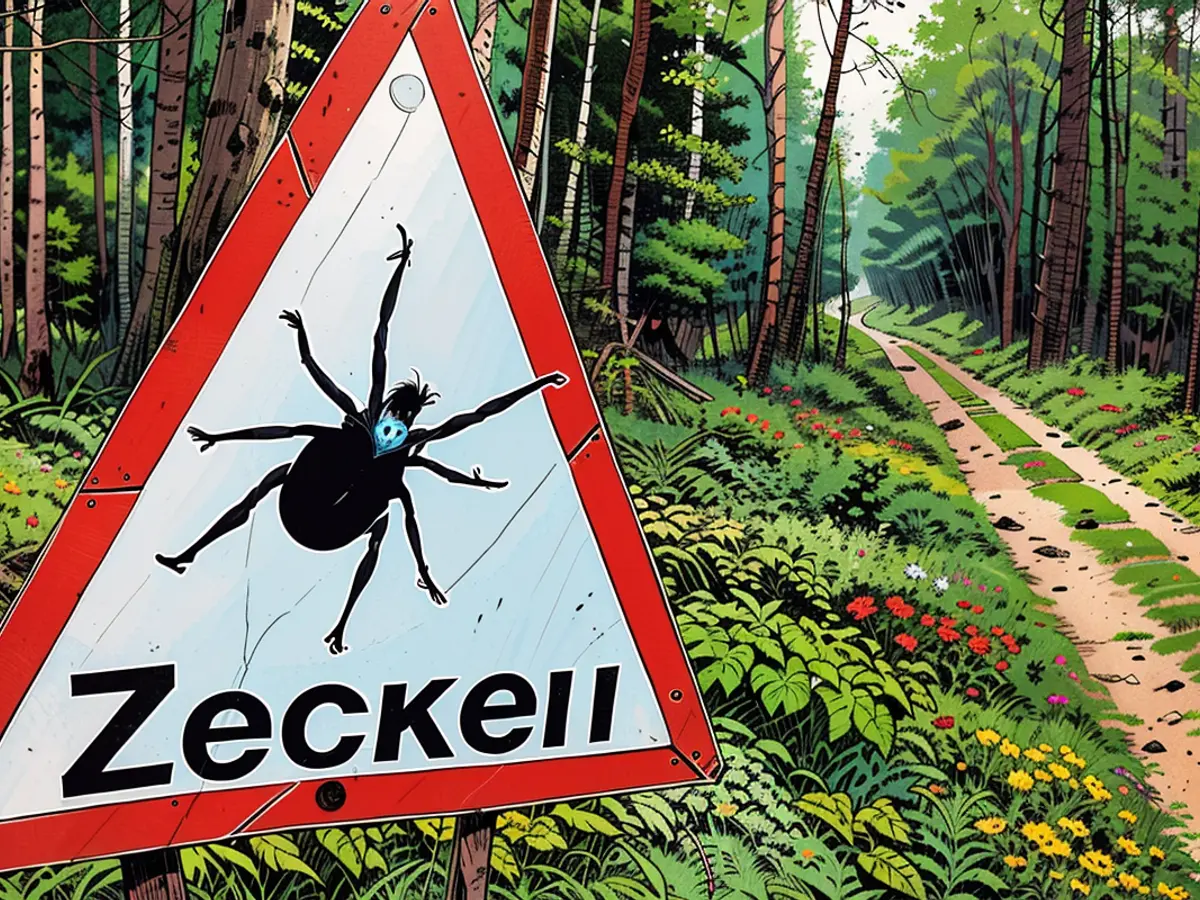Ticks pose a potential hazard. - Chart illustrates the high-risk regions for TBE in Germany.
### Tick Map Reveals Risky Regions: Tick Map Reveals Risky Regions
Ticks are warm-blooded creatures, so they need a certain temperature to become active. According to Berthold Langenhorst, the head of the Nature Conservation Union (NABU) in Hesse, "below 7 to 8 degrees, they normally enter hibernation and stop moving." Due to the warmer winters, ticks are becoming more prolific, and in southern Hesse, they are practically active all year round. This means that ticks could pose a danger to adults and children who spend time outdoors early in the year.
The two most serious infections that ticks carry in Germany are Lyme borreliosis and tick-borne encephalitis (TBE), according to the Robert Koch Institute (RKI). Lyme borreliosis is a bacterial infection requiring antibiotics for treatment, while TBE is an inflammation of the brain, spinal cord, or meninges caused by a virus, and vaccines are available against TBE.
Tick-Borne Encephalitis (TBE) Risk Areas
As per the Standing Vaccination Commission (STIKO), the TBE vaccine is recommended for all adults and children who spend time in TBE risk areas in nature. The following map indicates the TBE risk areas:
The Hessian Health Minister, Diana Stolz (CDU), emphasized the importance of the vaccine in preventing TBE infections. Currently, 180 districts are considered TBE risk areas in Germany, with Bavaria, Baden-Württemberg, southern Hesse, southeastern Thuringia, Saxony, and southeastern Brandenburg being the most affected.
The level of activity of ticks in Germany depends on temperature and humidity, as per the Hessian State Health and Care Office. They also noted that the common wood tick, the most prevalent tick species in Germany, reduces its activity when conditions are too dry or hot.
Protecting Yourself from Ticks Along with the TBE Vaccination
To further safeguard yourself against ticks, the NABU offers these tips on its website:
- Stay away from "tick habitats" which include grasses, ferns, and bushes during the summer.
- Examine your clothing and body for ticks after being in such areas.
- Adults should pay close attention to ticks on their legs, groin, and pubic area since they can simply brush them off while walking through low vegetation.
- For children, focus on checking the scalp, specifically in the hairline.
- Wear bright clothing to make ticks easier to spot.
- Wear smooth fabrics that ticks have a hard time gripping onto.
Spiders prefer habitats with plenty of moisture and protection from sunlight and wind. They lie in wait for animals, sensing them through vibrations, body heat, breath, or sweat odors, and then hitch a ride on them. Once they find a suitable spot, they bite.









